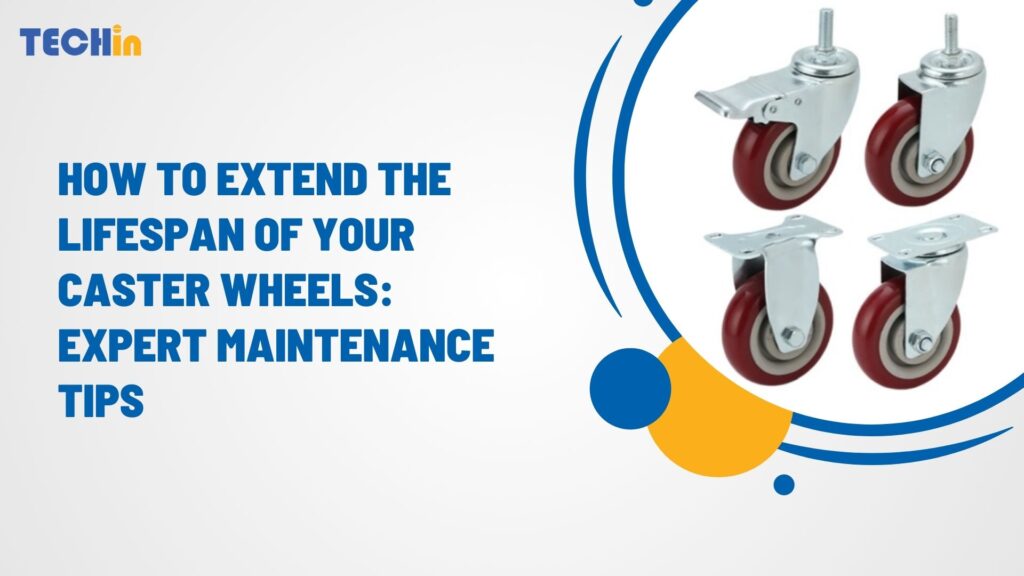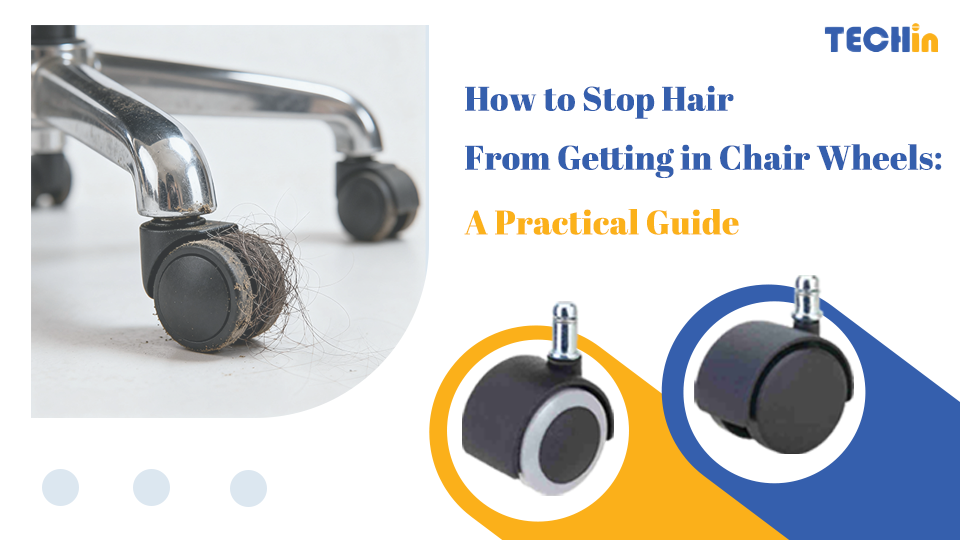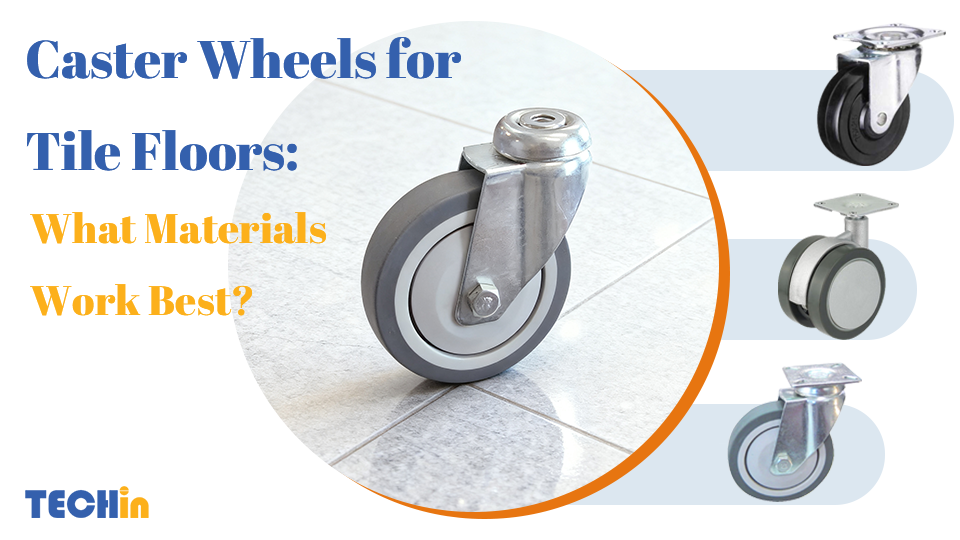Caster wheels are a big deal. They’re on everything from office chairs to industrial carts. But if you don’t take care of them, they’ll wear out. And when they do, you’ll have to replace them. That means you’ll have to spend money and you’ll have to deal with downtime. So, how do you make sure your caster wheels last as long as possible? You take care of them. You lubricate them. And you use them right.
To extend the lifespan of your caster wheels, you need to keep them clean, lubricated, and regularly inspected. Clean them to remove debris. Lubricate them to keep them moving smoothly. And replace any parts that are damaged. By doing these simple things, your caster wheels will last longer and work better.
Now that you know what you need to do, let’s talk about how to do it.
How to Choose the Right Caster Wheels for Longevity?
Selecting the correct caster wheels for your needs is a crucial step in ensuring their longevity. With so many materials and types of wheels available, choosing one that fits your specific requirements will minimize wear and tear, saving you money and effort in the long run.
- Material Matters:
The material of the caster wheel will largely determine its lifespan. Polyurethane is highly durable, protects floors, and can withstand a range of temperatures and conditions. Nylon wheels are ideal for lighter loads and are resistant to abrasions, but they may wear out faster on certain types of flooring. For heavier machinery, steel or rubber wheels are commonly used as they can handle high-impact environments. - Types of Caster Wheels:
There are various types, including swivel casters, rigid casters, and braked casters. Swivel casters allow for easy movement in all directions, whereas rigid casters provide straight-line movement and are ideal for heavier loads. Choosing the right type for your equipment ensures that the wheels won’t be overburdened, which can lead to faster deterioration. - Load Capacity:
It’s vital to match the caster to the load. Overloading the caster wheels will cause them to wear out prematurely. Always check the load rating to ensure the wheels you select can support the weight of the equipment.
Why Regular Check-Ups Are Essential for Caster Wheel Maintenance?
It’s easy to forget about your caster wheels until something goes wrong. However, just like any other mechanical part, caster wheels need regular check-ups to prevent bigger issues from developing.
- Cracks and Wear:
Over time, caster wheels can develop cracks or flat spots. These cracks can weaken the structure of the wheel, making it unsafe for continued use. Flat spots can lead to wobbling or uneven movement, which may cause further damage to both the caster wheel and the equipment it’s attached to. Regular inspections allow you to identify these issues early on. - Misalignment:
Another issue to watch out for is misalignment. Misaligned wheels will create more friction, which causes faster wear and strain. Ensuring that your wheels are aligned properly reduces the chance of uneven wear, prolonging their lifespan. - Loose or Worn Components:
Regularly check the axle, bolts, and fasteners to ensure they are secure. Loose or worn components can lead to wobbling or a reduced ability to carry weight, accelerating wear on the wheel.
How to Keep Caster Wheels Clean and Debris-Free?
Caster wheels are exposed to dirt, dust, debris, and other contaminants, which can all contribute to their wear and reduce their efficiency. Keeping your wheels clean not only enhances their performance but also ensures they remain in top working condition.
- Cleaning Process:
For basic cleaning, use a damp cloth to wipe down the wheel regularly. If the wheels are heavily soiled, soak them in warm, soapy water for 5-10 minutes. Use a soft brush or sponge to scrub the wheels, paying attention to the nooks and crannies where debris may accumulate. Be cautious not to damage sensitive components like bearings while cleaning. - Deep Cleaning:
For more thorough cleaning, remove the wheels from the equipment and clean them individually. Use compressed air to blow out any dirt lodged in the bearings and wheel components. After cleaning, dry thoroughly to prevent rust or corrosion. - Cleaning in Industrial Settings:
In environments with heavy dust or grease, you may need to clean your caster wheels more frequently. If they are exposed to harmful chemicals or oils, rinse them immediately to prevent the buildup of harmful substances.
How to Spot and Address Damage in Your Caster Wheels?
Caster wheels are designed to endure significant wear and pressure, but eventually, even the best-made wheels will show signs of damage. Being able to spot these issues early can prevent further damage to both the wheel and the equipment it’s attached to.
- Cracks and Splits:
Cracked or split wheels are the most common signs of damage. If you notice a crack, it’s crucial to replace the wheel immediately, as a broken wheel can lead to instability or complete failure. - Worn-Out Bearings:
Bearings inside caster wheels enable smooth movement. If the bearings are worn out, the wheel may become stiff or produce grinding noises. Replacing worn-out bearings can restore the caster’s functionality. - Bent or Damaged Axles:
Bent axles can cause misalignment and uneven wear. If you notice the axle is bent, it’s crucial to replace or straighten it immediately to avoid further damage to the wheel and equipment.
Lubricate Moving Parts to Keep Your Wheels Rolling Smoothly
Lubrication is a vital part of caster wheel maintenance. Proper lubrication helps reduce friction, preventing wear and tear on the moving components of the wheel.
- Lubricating Bearings and Axles:
Apply lubricant to the axle and the swivel bearings. Make sure to use a silicone-based lubricant or grease specifically designed for caster wheels. These lubricants will help maintain smooth movement, reduce noise, and prevent corrosion. - Frequency of Lubrication:
The frequency of lubrication depends on the usage conditions. For light-duty casters, a lubrication schedule of once every six months is usually sufficient. However, for heavy-duty industrial wheels, more frequent lubrication may be required—every 2-3 months for heavy-use environments.
Adjust Your Caster Wheels as Needed
Proper adjustment of your caster wheels ensures they perform optimally and last longer. Regular adjustments can prevent issues like wobbling or resistance, which lead to premature wear.
- Axle Tightness:
Loose axles can cause instability. Ensure that all fasteners and bolts are tight but not over-tightened, as this could cause undue stress on the wheel. - Wheel Alignment:
Misaligned wheels cause uneven wear and poor performance. Check the alignment of your caster wheels regularly and make adjustments as needed to keep the load balanced and the wheels running smoothly.
Protecting Your Caster Wheels from Corrosion and Wear
Caster wheels are often exposed to harsh conditions, including moisture, chemicals, and extreme temperatures. If left unprotected, they can corrode, which significantly shortens their lifespan.
- Anti-Corrosion Products:
Use anti-corrosion sprays or coatings to protect your caster wheels from rust and corrosion. These products create a protective layer on the surface of the wheel, making it more resistant to the elements. - Environmental Considerations:
If your wheels are in an environment with high humidity or exposure to corrosive substances, make sure to regularly inspect and protect them. For example, using wheel guards or covers can help shield the wheels from direct exposure.
Use Wheel Guards to Prevent Accumulated Dirt and Damage
Wheel guards act as a barrier to prevent dirt, debris, and other contaminants from getting stuck in your wheels. These guards are particularly useful in industrial settings where dust and debris are common.
- Benefits of Wheel Guards:
Wheel guards protect against physical damage from obstacles and debris while preventing dirt buildup inside the wheel. This can help extend the life of your caster wheels by reducing the wear caused by dirt and grime.
When to Replace Worn-Out Components
Even with the best maintenance practices, caster wheels will eventually need to be replaced. Knowing when to replace the components can save you from bigger repairs down the road.
- Identifying Excessive Wear:
If your wheel has a noticeable flat spot, is cracked, or shows visible damage to its components, it’s time to replace it. Delaying replacement can lead to damage in the axle or equipment, resulting in more costly repairs. - Bearing and Wheel Replacements:
If the bearings or the wheel itself are too worn to function properly, replacing these individual parts is more cost-effective than replacing the entire caster unit.
Summary
When you follow these expert maintenance tips, you can greatly extend the life of your caster wheels, so they keep working well for years. Regular cleaning, lubrication, and checking parts are key to good upkeep. If you pick the right wheels, take preventive steps, and fix problems quickly, you can avoid costly replacements.










